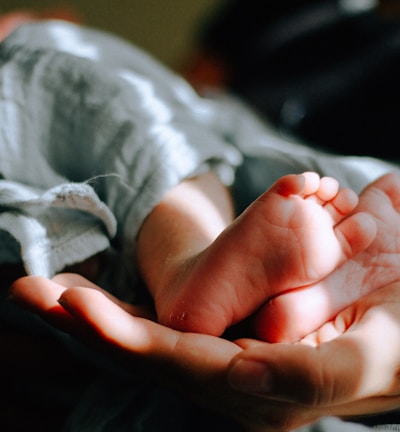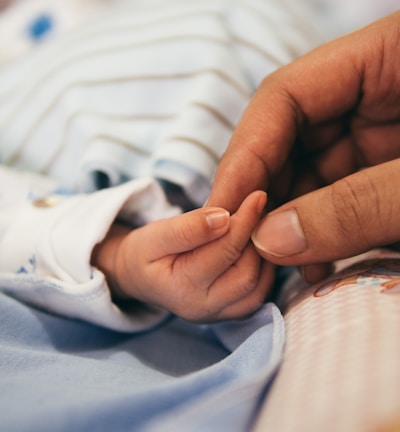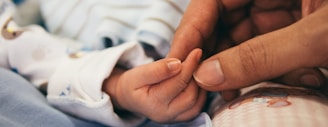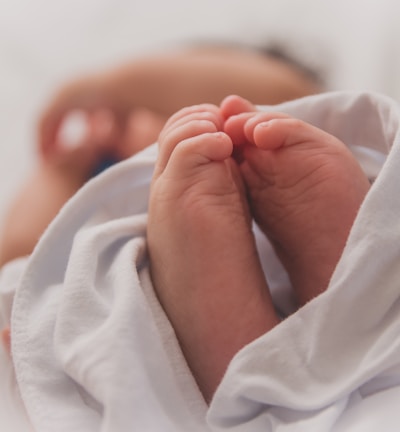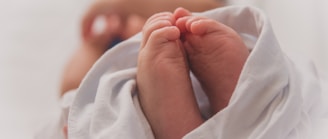A Practical Guide to Elimination Communication (EC): A Behaviour Analyst's Perspective
EC - what is it? How do I do it? Is it toilet training? A step-by-step guide.
PARENTING RESOURCES
I am a mother of two kids, a behaviour analyst and psychotherapist. I have worked with countless children (including kiddos diagnosed with autism) ranging from 1- 8 years old, who were not toilet trained. I’ve been urinated on, cleaned diapers, had dirty diapers flung at me, and simply not a fan of changing diapers. I still do not consider myself a potty-training expert as there does not seem to be one way that works for every kid or family. You need to find the method and time that works for you.
When I first read about elimination communication (EC), I was sold. As a behaviour analyst, teaching individuals (especially non-verbal individuals) effective ways to communicate is one of the essential interventions in helping people meet their goals or change maladaptive behaviours. I was overjoyed to hear that my child could show me signs to communicate that s/he needs to go pee, from birth. Like playing detective and figure out what those signs (antecedents) are.
I believe that as a child grows older, it is harder to break habits and patterns. As a child becomes accustomed to voiding (pooping & peeing) in a diaper, this becomes a habit. The longer this goes on, the harder it is to change and have them learn a new habit, going on the toilet.
I’m also lucky to have a partner who is also trained in applied behaviour analysis and did not mind the occassional mess from EC. I thank him for supporting us on our EC journey.
Before we begin, here are some Recommend EC Reads:
“The Diaper Free Baby” by Christine Gross-Loh is the most recommended book for EC.
I highly recommend this book. It is non-judgemental to parents who want to do EC part time, and a fun and easy read. I enjoyed reading so many parent testimonials and stories, it filled me with confidence on trying this myself.“Big, Bad John! A “Cheeky” Look at Toilet Training
Written by a fellow behaviour analyst, the article highlights that applied behaviour analysis suggests individualized approaches to interventions for toilet training children, and also I love the summary of approaches, and she does what I (any what any behaviour analyst would do) do - reinforce!! Provide hugs/kisses/praise/treats for successful pee/poops in the toilet (or for trying)
Let me clear up some Common Misconceptions:
EC is not toilet training
EC does not need to be done full time. You can put your baby in diapers at times when you cannot do EC, i.e. in the evening, when you are going out on a trip, whenever.
EC doesn’t mean your baby doesn’t wear diapers. You can still use diapers, cloth diapers, whatever you wish
Is EC right for you and your family?
Pros:
You can choose how much time you put into EC, from 20 min a day, to full-time
Environmental
Less clean up of smeared messes on your baby’s bum if you catch some pee or poop (U/BM)
May have a lower chance of UTI
Child picks up the habit of voiding outside of a diaper (may lead to easier toilet training in the future)
Cons:
Does take time
If you catch a U/BM, save a diaper!
Some parents may feel stressed if they don’t catch all/ any
Diapers are pretty convenient
I've cleaned a number of puddles on my floor, there will be misses, Potentially messier without a diaper.
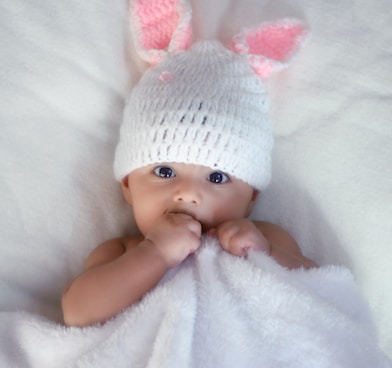
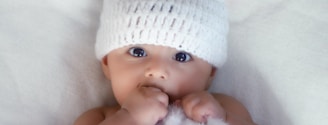
Part 1: Log of Child's Activities
Here is a sample log to fill in as you get to know when your child goes pee/poop - learn their rhythms and timings.


Part 2: Scheduled EC Times
How to start EC - Pairing peeing/ pooping with your cue
Pick a sound that you want your child to learn, as a cue for peeing or pooping.
I made the sound "pssss" and a grunt for poop.
When she was older, I said “pssss pee pee” or “poo”.
Schedule times to observe your baby
Put baby diaper free, or in a loose diaper so you can observe when s/he urinates/poops
Notice of s/he does anything immediately before she pee/poops (this is called an antecedent)/.
As soon as s/he pees or poops, make your pee/ poo sound. This will help your child pair the sound with peeing/ pooping
AND IF POSSIBLE, hold him/her over a bowl/ toilet/ sink, to catch the pee/poo
This step isn’t too important when you first start EC. You just want him/her to pair pee/pooing with your cueRecord the antecedent and time of pee/poo in your record log (if any. For my baby, she showed no cues for peeing or pooping until she was 11 months old)
Repeat steps 4-6 for as long as possible
Q& A
How do I hold my baby over the bowl/toilet/sink?
a) in arms position, over a sink/ toilet/ bathtub/ outdoors (parent can straddle toilet with his/her legs)
b) over a container
c) in a potty (if your child can sit up on his/her own) or on a toilet seat (with seat insert)
Some common antecedents to pee/pooing (signs your baby needs to go)
- You notice a change in behaviour
(This could be any change, for instance if s/he starts to squirm/wiggle, spit up, stop breastfeeding/eating, looks unsettled, shivering, blowing raspberries, passing gas, arching back when held in your arms, making a vocalization/sound, moving towards potty/washroom, boys slightly swollen penis). My baby stands up, is still, and looks down for pee. She grunts for poop or even says "poo" (started saying that around 1 year old, not all the time though), sometimes she farts before a poo
- feeding / meals
- kicking legs
- making eye contact/ a blank expression or frown
- when diaper is taken off
- Waking up from a nap/ sleep
- coming out of a car seat/ stroller/ sling or arriving at home after outing
- Signing ASL for potty (how to teach this is below)
- “Warning” pees - a little pee comes out (not the full pee)
- “Phantom” pees - your baby may feel warm in temperature, as if he/she did urinate (but didn’t)
- after bath
Part 3: Celebrating your child's success
Reinforce your child for peeing over a container/potty/ sink/ toilet (i.e. praise them, sing their favourite song, celebrate success)
This is for when you gain more confidence and start catching him/her going over a container/potty/sink/ toilet
When you see your baby’s antecedent to peeing/ pooping, tell him to “wait” and get him/her over a container/ potty/ over a toilet/sink
Once you have him/her over the container, take off pants/ diaper
Make your cue sound to urinate/bm (i.e. say “pee pee” or “poo poo”)
Repeat your cue sound, for as long as he/she is urinating/pooping
Praise and reinforce your baby for going in the toilet (cheer/ give praise/ kisses)
Clean your baby’s bum. You could use a cloth or wipe, or pour some water over and wipe dry. There won’t be too much mess when the poo is liquid so for me, I didn't really need baby wipes, but those are really convenient too!
Part 4: How to Teach your Baby to Gesture 'I need to go'
Once you’ve gotten PART 2 and Part 3 established and you know you baby’s common antecedent(s) to peeing or pooping, you can you can start to teach your baby a gesture to communicate that he/she needs to go. I chose to teach my baby the ASL gesture for potty https://www.youtube.com/watch?v=vCsoQutQ-WI
When you see your baby’s antecedent to peeing/ pooping, physically prompt him/her to make the ASL sign for potty (or whatever gesture you want to teach him, to tell you that he/she has to go)
Get him/her over a container/ potty/ over a toilet/sink
Once you have him/her over the container, take off pants/ diaper
Make your cue sound to urinate/bm (i.e. say “pee pee” or “poo poo”)
Repeat your cue sound, for as long as he/she is urinating/pooping
Praise and reinforce your baby for going in the toilet (give him attention/ praise/ kisses)
Clean your baby’s bum.
Keep prompting, and start to fade your physical prompt to gesture, until your baby learns the gesture for pee/poop, to tell you that s/he has to go.
Q & A
What do you need to do EC?
Container/ potty
Cloth diaper/ prefold/ disposable diapers
Pants that are easy to take off, or just t-shirts for baby
Recommended: Waterproof mat or towel or something for baby to lie on to catch the pee or poop
Recommended: log sheet to record child’s timings/ cues/ activities
Travelling and EC
You don’t need to practice EC all the time. Some parents don’t practice EC when they are on outings, out of the home, but if you want to, it is definitely possible! You can bring a diaper bag with a container for excretions (I collected a bunch of used plastic takeout container, you could use a yogurt or sour cream container, or a cup if you have a boy, anything that will contain the liquid/poop) or portable potty and try to catch him/her when she/he has to go.
You can bring a towel or something to cover your child if you need to catch him/her discreetly, let’s say when you don’t think you’ll get to the washroom on time.
What do I do at Night?
You don’t need to practice at night, some parents choose not to and keep baby in a diaper, that’s alright too. I tried it again first and decided to not do it at night. I kept my baby in a disposable diaper at nightime and changed her in the morning. She didn't poop at night luckily so just keeping her in a disposable; best to not disturb her (or my) sleep.
If you wish to practice EC at night and sleep in the same bed/ near your baby, here are some steps you can follow.
IMPORTANT: make sure you practice safe sleep guidelines, there’s nothing your baby could suffocate on (i.e. loose cloth)
Place a waterproof sheet under baby/mattress Optional: put a fleece sheet/ absorbent pad on top of bedsheet
Try to toilet baby before putting him/her to sleep, take diaper off, make your cue, and see if he/she goes. If he/she does, praise and reinforce this (lots of kisses and priase!)
Put baby in loose clothing that’s easy for you to change, or keep diaperless or prefold and change if it’s soiled
Put a container by bedside so you can grab it, do EC quickly, and return to sleep
Optional: turn on nightlight, this makes it easier to do EC and return to sleep
If you notice your baby waking up in the middle of the night and making any of his/her antecedents to pee/pooing, place him/her over the container and wait a little to see if he/she goes
Reinforce baby for going and go back to sleep

